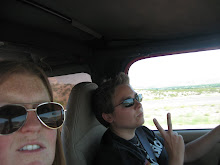This first post is going to ramble a bit, so bear with me…
I stopped by the opening reception for yet another new gallery on Canyon Road last week. I was initially struck by the redundancy of the neo-impressionist inventory and the uninspired stylings of their artists. In other words, yawn. Is it any wonder we don’t have a vibrant youth art culture in mainstream Santa Fe? There may be young blood flowing through our city’s veins, but it seems largely isolated to the Railyard and places like Warehouse 21. The question is why can’t we have a commingling of the old and the young, the lucrative tourist market and the spark of creativity inherent in young art? Santa Fe is one place where it is possible to be an artist and not starve. Unfortunately, our young artists are still undernourished.
Santa Fe is by all counts a unique art market. As Sara pointed out, with a population just over 70,000 we are the second largest art market in the country. That means (particularly for those of us employed in the industry) the citizens of The City Different live, breathe, and eat art. Whether they want to or not.
A brief synopsis of my personal journey – with degrees in art history and library science I came to Santa Fe with the idea that I would work in a museum. Instead I was swayed by the gallery siren song and the idea of working hands-on with a dynamic inventory of art. While the work is essentially identical to the kinds of collection management I have always dreamed of in a museum context, the difference is MONEY, both as a concept and as a manifestation of power and influence. People come into our gallery interested in purchasing the paintings on our walls. Our inventory is a privately-owned profit commodity rather than a publically-funded social commodity. Yet we still have the awe-struck art lovers wandering through just as they would in a museum. There’s nothing I find more personally gratifying than hearing someone say “this is one of the best art collections in Santa Fe!” (completely true, in my totally subjective opinion).
Recently I returned to academia with the intent of getting my MA in art history. In the university environment, as well as the museum community where I did my internships and volunteering, there is a distinct (thought generally unspoken) bias towards gallery work. Despite the pride and joy I feel talking about my job to family and friends, I still feel somewhat abashed to admit my place of employment to academic colleagues, fearing assumptions of my lesser academic credentials and professional motivations. The idealistic and selfless museum-centric view is that our missions are intrinsically different. However, I’ve come to realize that it’s an artificial idealism to look at museums as purely selfless charitable institutions. As the recent economic collapse has elucidated, a bottom line is a bottom line. These are businesses with endowments and share-holders who bow down to the almighty dollar just like any corporation.
Mission statements are a major component of museum ideology and branding. Some samples: MOMA – “The Museum of Modern Art is dedicated to being the foremost museum of modern art in the world.” The Getty – “The J. Paul Getty Museum seeks to further knowledge of the visual arts and to nurture critical seeing by collecting, preserving, exhibiting and interpreting works of art of the highest quality.” This is language chosen to exude altruism. Galleries don’t really have mission statements because if they did they would probably read something like “We hope to make enough in profit to continue to collect the kind of art we enjoy while still paying the electric bill and hopefully becoming rich and influential members of the community so we get invited to the really fancy parties.” However, the truth is that the art world is not a stream with a current in one direction. It is an intricately woven tapestry of transcultural influences. Galleries are part of a complex system of trend-making that combines talent, networking, media exposure, timing, cultural context, and, yes, money. Museums do not exist in a vacuum but are rather an intrinsic component of this system. Museum collections are determined by the art popularized by the commodified and fetishized world of private dealers and exhibitions. Physical inventories are bought and sold between the two. Galleries and museums are two sides of the same coin, and for art lovers it’s the experience, not the raison d’etre, that matters.
~Heather
Friday, September 11, 2009
Subscribe to:
Post Comments (Atom)


No comments:
Post a Comment